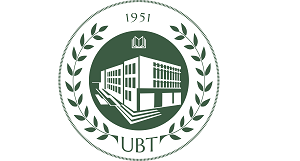RIGERS BAKIU1*, JANI TAÇI2, ERJONA NALLANI1, ELVIS KAMBERI1, EDMOND HALA1, EDLIRA SADIKU1, ENKELEJDA BUDA3
|
1Department of Aquaculture and Fisheries, Faculty of Agriculture and Environment, Agricultural University of Tirana, Tirana, Albania 2N.S.P, Tirana, Albania 3Laboratory of Aquaculture and Fisheries, Department of Aquaculture and Fisheries, Faculty of Agriculture and Environment, Agricultural University of Tirana, Koder- Kamez, Tirane, Albania Abstract Aquaponics means the integration of two technologies, which are represented by the Hydroponic System (growing plants in water) and Aquaculture Recirculating System (growing of aquatic organisms with interest for aquaculture sector). In an Aquaponic system, the aquatic animals excert ammonia based excrements, which are later converted by the bacteria into nutrients, where some of them are valuable for the plants; the plants are responsible for cleaning the water at the same time and later the water is brought clean by the pumps to the aquatic animals. The aim of the study was testing the growth of some medicinal plants in a commercial system and an experimental system created in house (stimulated by the pandemic situation). The comparison of the growth parameters (horziontaly and vertically growth was monitored during the experimental period) in a commercial farm located in Maminas and in the experimental system. The results showed that the mint plant (Mentha piperita) demonstrated a good growth just some days before the cutting by following a linear growth profile; differently happened with the commercial farm, where the horizontal growth was subject to an exponential accumulation of the plants. Further studies about the other characteristics (morphometric and organoleptic) are required in order to identify the effectinveness and advantages of these technologies, while it should be further adapted to the COVID19 pandemic situations. Keywords: Aquaculture Recirculating System; Hydroponic system; mint. |
